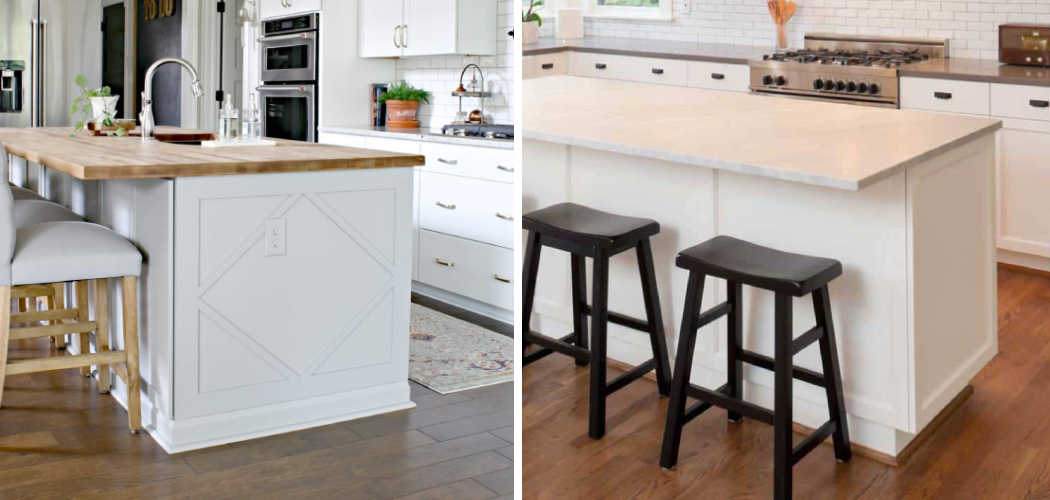Are you considering installing a kitchen island but wondering how it is attached to the floor? Kitchen islands can be an aesthetically pleasing and practical addition to your home, providing extra storage or workspace for food preparation. It’s important that it’s securely installed, so let’s take a look at the various methods of attaching a kitchen island to the floor.
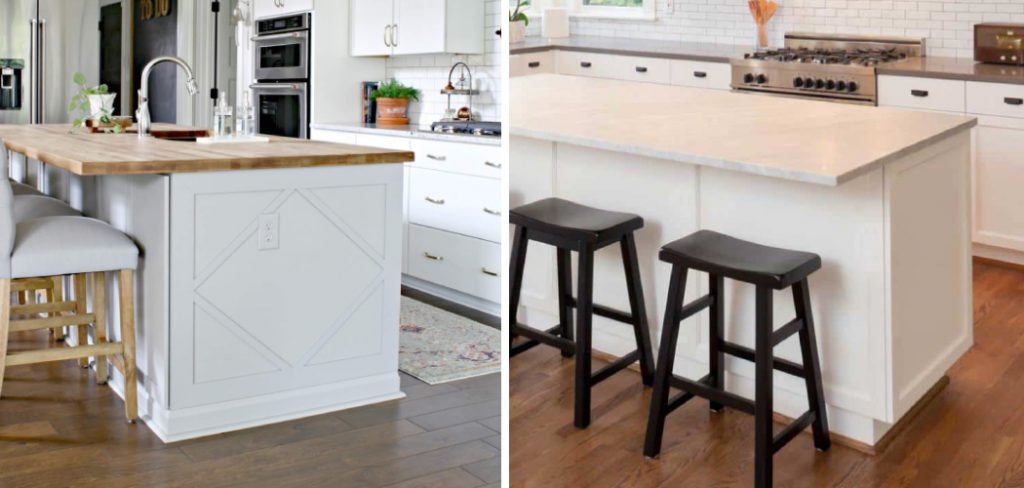
We’ll review what type of materials you may need for each option, as well as any potential challenges that come with each method of installation. With this knowledge in hand, you will know about how is a kitchen island attached to the floor!
In this blog post, we are going to explain the different ways that a kitchen island can be securely attached to your floors so you can reap all of its benefits. From attachable feet and adjustable legs to permanent installation methods such as anchoring bolts, get ready for an in-depth exploration of how a kitchen island can become part of your space.
Read on for more information about the various techniques used and tips for ensuring you have installed it safely and correctly.
Why May You Want to Attach a Kitchen Island to the Floor?
1. To Keep the Island From Moving
An attached kitchen island will stay in place, even when you’re using it for activities like cooking or baking. This can help prevent any accidents that may occur if the island is not properly secured. Also, make sure to secure the island in place with screws and bolts so it won’t move even under heavy use.
2. For More Stable Support
Attaching your kitchen island to the floor will provide more stability than simply resting it on its casters or legs. This is especially important if you plan on using a heavier countertop, such as granite or marble, as the extra weight can cause instability if the island isn’t secured to the floor.
3. To Create a More Permanent Fixture
If you want your kitchen island to become part of your home, attaching it to the floor is one way to make sure it stays in place for years to come. This also ensures that, even if you change up your decor or move to a new home, you can bring your kitchen island along with you.
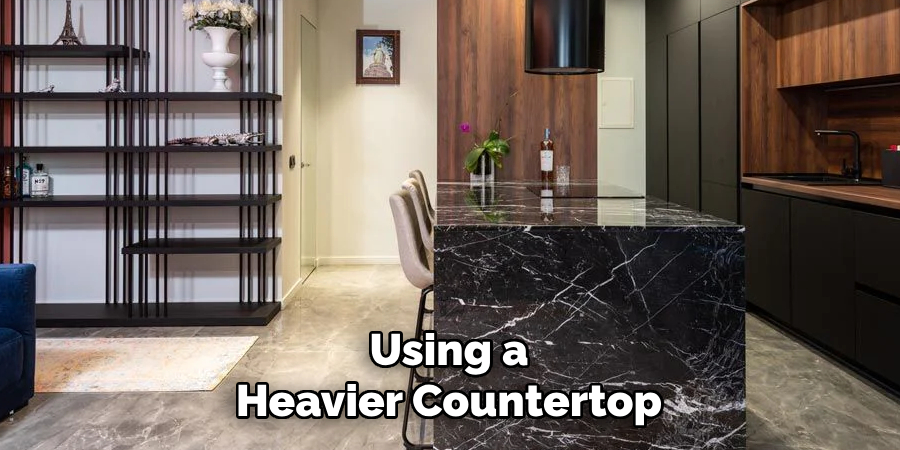
10 Ways About How is a Kitchen Island Attached to the Floor
1. Securely Fasten the Island in Place
Begin by positioning the island in its desired location. Then, secure it to the floor using screws and bolts for additional stability. Make sure that all connections are properly tightened so the island will not move even when you are using it.
2. Install a Support Beam
If your kitchen island is exceptionally heavy or large, you may want to consider installing a support beam to provide extra reinforcement and stability. This beam should be secured directly to the floor joists for maximum strength and durability.
3. Add Casters if Desired
If you want to make your kitchen island mobile, you can add casters to the bottom of the feet. This will allow you to easily move the island around as needed. Be sure that the weight capacity and size of each caster is sufficient for the size and weight of your kitchen island.
4. Utilize a Framing Structure
If you are installing a pre-fabricated island, it may come with a framing structure. This structure is designed to be securely attached to the floor and provide additional support for the kitchen island.
5. Pour Concrete Slab
If you are installing a heavy-duty kitchen island, you can pour a concrete slab directly in front of where your island will sit. This will prevent any shifting or settling over time. Also, the concrete will provide an additional level of stability and support for your kitchen island.
6. Install Wall Braces
Whether you have a floating kitchen island or one connected to floor joists, it is a good idea to install wall braces around the perimeter of the room. This will help to keep your kitchen island firmly in place even when it is being used heavily.
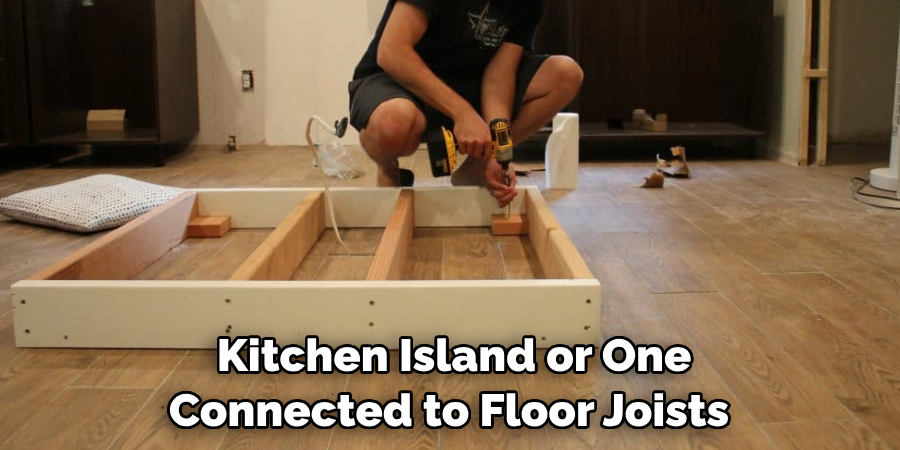
7. Use L-Brackets or Angle Iron
You can use either an L-bracket or an angle iron to secure the kitchen island to the floor. This method is often used when installing islands that are not pre-fabricated. Simply attach one end of the bracket or angle iron to the underside of the island and then drill it into the floor.
8. Secure the Perimeter of the Island
If you have a freestanding kitchen island, it is important to secure the perimeter of the island with screws or bolts. This will ensure that your island does not move around when you are using it.
9. Use Adhesives and Caulk
For smaller islands, you can use adhesives and caulk to help keep it in place. This is a good option if your island will not be subjected to heavy use or movement. Also, make sure that all of the connections are properly sealed to prevent any water damage.
10. Install Leveling Feet
If you want your kitchen island to be adjustable, you can install leveling feet on the bottom. This will allow you to easily adjust the height of the island as needed for comfort and convenience. Just make sure that all of the connections are secure before using it.
Installing a kitchen island correctly can be tricky, but if done properly, it will be secure and stable for years to come. By following these steps on how is a kitchen island attached to the floor, you can ensure that your island stays securely in place and provides plenty of support for all of your cooking needs.
Frequently Asked Questions
What Precautions Should I Take When Attaching a Kitchen Island to the Floor?
When attaching a kitchen island to the floor, you should take into consideration the type of flooring underneath. If your floor is wood or laminate, it’s important to use secure mounting hardware and make sure that you drill pilot holes in strategic locations before driving any screws into the floor.
For tile floors, you should use a few long screws or anchors to secure the island in place. Make sure that the mounting hardware is properly secured with extra adhesive if necessary.
What Types of Anchors Are Used to Attach a Kitchen Island to the Floor?
Various types of anchors can be used to attach a kitchen island to the floor, depending on your preferences and the type of flooring. Some common types of anchors that can be used include toggle bolts, lag screws, expansion anchors, and masonry screws. Each type of anchor must be properly secured to ensure the kitchen island is firmly attached to the floor.
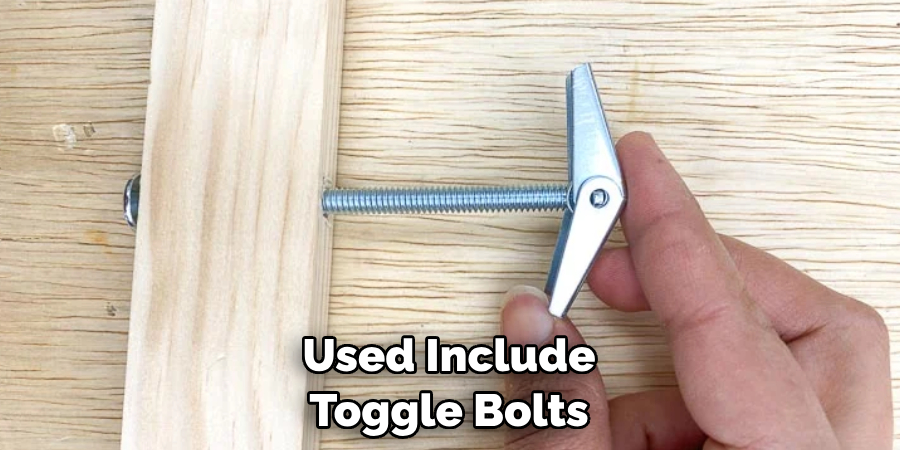
Are There Any Other Considerations When Attaching a Kitchen Island to the Floor?
Yes, there are several other considerations when attaching a kitchen island to the floor. The weight of the island should be taken into account, as it may require extra support or anchoring if it is too heavy.
It’s also important to make sure that all mounting hardware and screws are properly secured so that the island does not wobble or move around. Additionally, you should measure carefully before drilling any holes in order to ensure the island is securely attached to the floor.
Can I Make Any Modifications to an Existing Kitchen Island?
Yes, it is possible to make modifications to an existing kitchen island. Depending on the type of material used for the island, you may be able to add shelves, drawers, or other features to increase its functionality.
However, when making any modifications or additions, it’s important to ensure that the structure of the island remains stable and secure. It’s also important to use the appropriate anchoring hardware when attaching the new components to the floor in order to ensure that they are securely fastened.
Are There Any Special Considerations When Attaching a Kitchen Island with Wheels?
Yes, there are special considerations when attaching a kitchen island with wheels. If you plan on using it as a movable piece of furniture, it’s important to make sure that the wheels are securely attached and can support the weight of the island.
Additionally, you should use locking casters so that the island won’t move when in use. Finally, be sure to secure any extra anchoring hardware in case you ever decide to remove the wheels from your kitchen island.
Can I Attach a Kitchen Island to an Uneven Floor?
Yes, it is possible to attach a kitchen island to an uneven floor. However, you should use adjustable mounting hardware such as shims or wedges to level the island and ensure it is securely attached. Additionally, make sure that all of the screws are properly secured in order to prevent any movement or wobbling when the island is in use.
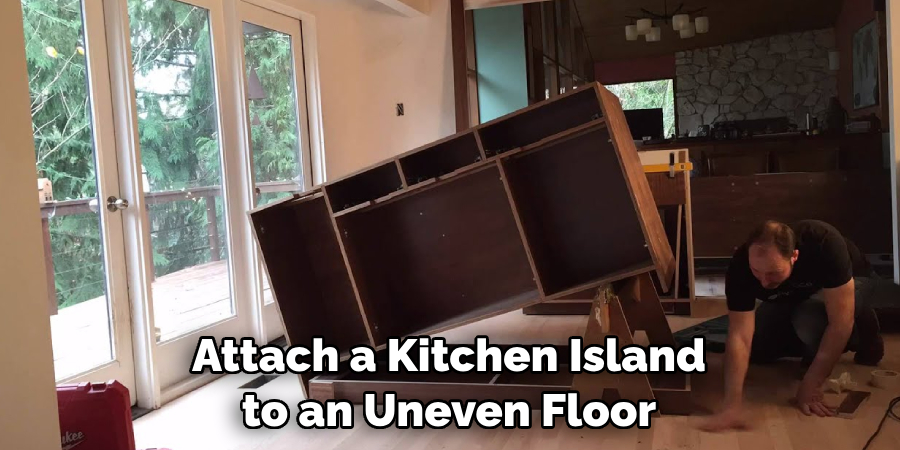
Attaching a kitchen island to the floor can seem like a daunting task, but with careful planning and the right tools, it can be done quickly and easily. Make sure that you take into account any unique features of your space such as type of flooring or unevenness, and use the appropriate anchoring hardware accordingly.
Conclusion
In short, kitchen islands can be a great addition to any kitchen. They not only add extra counter space and organization but can also alter the overall look of the room. However, it is important to take into account how they are attached to the floor for safety purposes, especially given their large size.
Now you know about how is a kitchen island attached to the floor! Even though there are several ways to attach an island to the floor, it is best to hire a professional who has experience with this task. By doing so, one can rest assured that their island is securely anchored while being properly fitted and installed. After all, nothing completes a kitchen quite like the perfect kitchen island.
